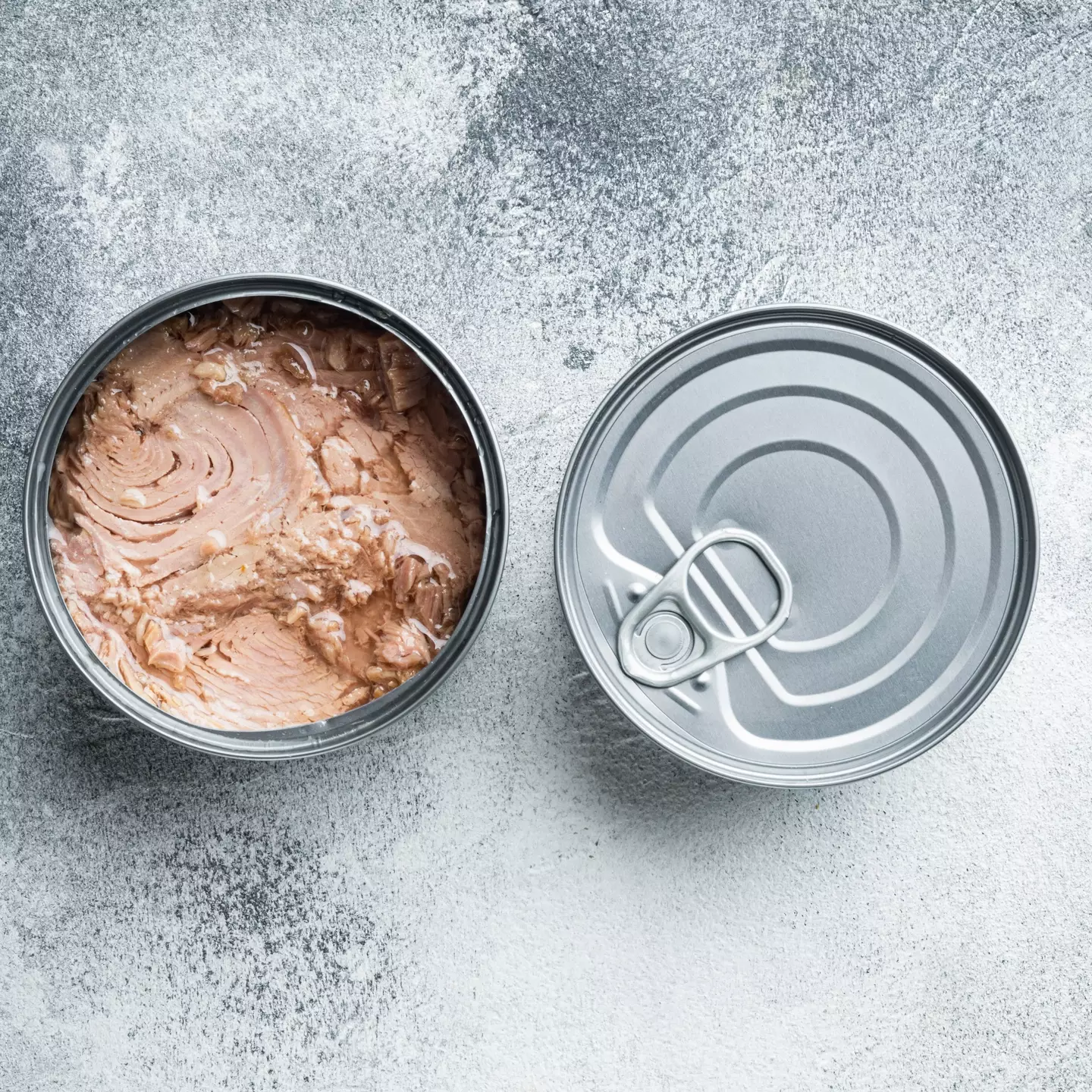Tinned tuna has long been a popular staple for its convenience and rich omega-3 content. However, recent studies have cast doubt on its safety, particularly concerning mercury contamination. Health activists and researchers are now urging authorities to ban tinned tuna from schools, hospitals, and other institutions, citing a “colossal risk to public health” that particularly endangers vulnerable populations.
Why Tinned Tuna is Under Fire: Mercury Contamination Revealed
Mercury is a naturally occurring element but can be highly toxic when present in excessive amounts. Studies have shown that tuna, as a larger fish, accumulates more mercury than many other species due to its position in the food chain. A recent study conducted across five European countries— the UK, France, Italy, Germany, and Spain—analyzed nearly 150 tins of tuna and found that 57% of the samples contained mercury levels exceeding safe limits.

Tinned tuna might not be as nutritious and delicious as you might think, new research suggests (Getty Stock Image)
The discovery has raised red flags among health and consumer advocacy groups, who argue that vulnerable groups such as children, pregnant women, and the elderly should not be exposed to mercury-tainted tuna in institutional settings where they often have limited food choices.
The Health Risks Associated with Mercury Exposure
The potential health risks from mercury exposure are extensive. Mercury can impact the nervous system, leading to cognitive difficulties, impaired vision, and even hearing and speech problems. Severe mercury poisoning can result in nausea, vomiting, and flu-like symptoms. In extreme cases, prolonged exposure to mercury has been linked to lung damage, organ failure, and certain types of cancer.
For pregnant women, the risks extend to the developing fetus, as mercury exposure can interfere with neurological development. Due to these concerns, public health organizations recommend that women who are pregnant or trying to conceive limit their tuna intake. Mark Willis, head of chemical contaminants at the UK’s Food Standards Agency, advises that women in these categories should consume no more than two tuna steaks or four cans of tuna per week, as tuna has higher mercury levels than most fish.
Campaigners Demand Tinned Tuna Ban in Public Institutions
In light of these findings, advocacy groups Bloom and Foodwatch are calling for stricter mercury regulations on tinned tuna and urging public institutions to remove it from their menus. They argue that the current permissible mercury limit of 1mg/kg for tuna is based more on market convenience than on public safety. According to Bloom, European public authorities have established a threshold that allows 95% of tuna caught to be sold, despite its contamination levels. They allege that these standards are designed to favor industrial tuna fishing interests over consumer health.
Karine Jacquemart, CEO of Foodwatch, described the situation as a “colossal risk to public health” that has not been adequately addressed by regulatory authorities. Her organization demands that tinned tuna products be labeled with clear warnings about mercury exposure risks and that advertising for these products be more restrained, especially given the high levels of contamination uncovered in recent tests.
Current Mercury Limits and Calls for Reform
Under UK and EU law, the current mercury threshold for tuna is set at 1mg/kg, which is significantly higher than the 0.3mg/kg limit set for other fish species. This allowance means that tuna, one of the most mercury-prone fish, is legally permitted to contain triple the mercury levels compared to other fish. This regulatory inconsistency has led health advocates to question the criteria used to set these limits, arguing that they prioritize commercial interests over public health.
In response to the new research, both Bloom and Foodwatch are calling for a complete overhaul of these limits, pushing for stricter regulations on mercury levels in tuna. They also want supermarkets to stop selling any tinned tuna that exceeds even the lower 0.3mg/kg threshold, which would align tuna with the mercury standards applied to other fish.

Activists want it taken off the menu in hospitals, schools, care homes and maternity wards (Getty Stock Image)
Implications for Schools, Hospitals, and Other Vulnerable Settings
The high mercury levels in tinned tuna pose a unique challenge for schools, hospitals, maternity wards, and care homes, where meals are often provided to individuals who may be more susceptible to mercury toxicity. Children, pregnant women, and the elderly can be particularly vulnerable to mercury’s effects, given their physiological sensitivities. Activists argue that these individuals deserve greater protection from foods that may jeopardize their health, and they are pressing for immediate action to eliminate tinned tuna from these settings until safer options can be guaranteed.
Industry Response and Government Position
Eli Lilly, the pharmaceutical company behind some tuna-related health supplements, stated that it prioritizes consumer safety and is closely monitoring the issue. However, Foodwatch and Bloom claim that both government regulators and the fishing industry have engaged in what they call “cynical lobbying” to protect their economic interests, potentially at the expense of public safety.
In response, the MHRA (Medicines and Healthcare products Regulatory Agency) emphasized that it applies rigorous standards to ensure product safety. A spokesperson noted that the Yellow Card Scheme is available for reporting adverse reactions to any food or drug product, including mercury contamination in tuna. However, as Jacquemart of Foodwatch points out, the health of “hundreds of millions of tuna consumers in Europe” may be at risk if stricter controls are not implemented.

Why Mercury Contamination in Tuna Remains a Health Scandal
Foodwatch has described the current regulatory approach to tuna as a “health scandal on an unprecedented scale.” They argue that the public deserves transparency, clearer labeling, and more information about potential risks. While mercury levels can vary between tuna products, the lack of consistent and clear information on packaging means consumers may be unwittingly exposing themselves to dangerous mercury levels.
Moreover, public health advocates suggest that Europe’s mercury tolerance in tuna is not aligned with the latest scientific understanding of mercury toxicity. They are pressing for revised standards that better reflect the health risks associated with frequent tuna consumption, particularly for populations already susceptible to mercury’s toxic effects.
Conclusion: A Call for Safer Standards and Greater Transparency
As the debate around mercury levels in tinned tuna intensifies, it is clear that changes in policy may be necessary to prioritize consumer health. With advocacy groups like Bloom and Foodwatch at the forefront, there is growing pressure on regulators to set stricter mercury limits and increase transparency in labeling. Until clearer, safer standards are implemented, institutions like schools and hospitals may consider removing tinned tuna from their menus to protect vulnerable populations.
In the meantime, consumers are encouraged to stay informed, pay attention to consumption recommendations, and explore alternative sources of omega-3 to maintain a healthy diet. The call for action continues, with public health at the heart of this ongoing battle for transparency and safety in food standards.


